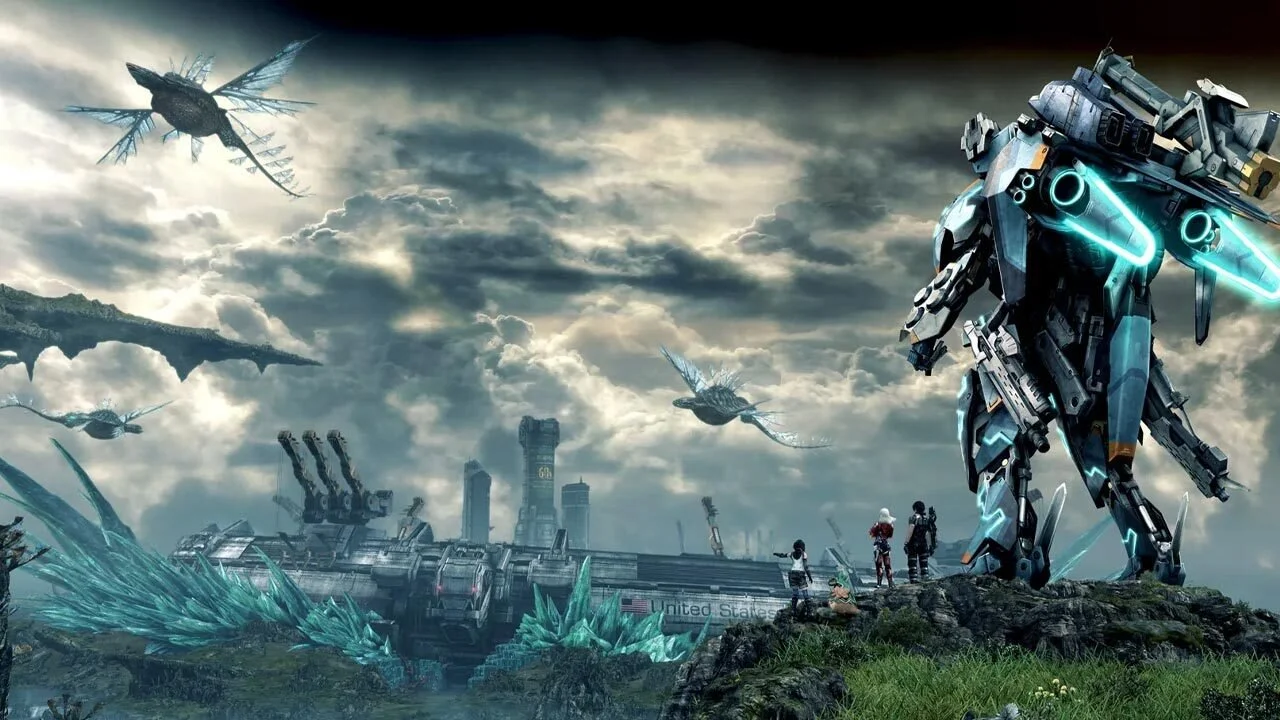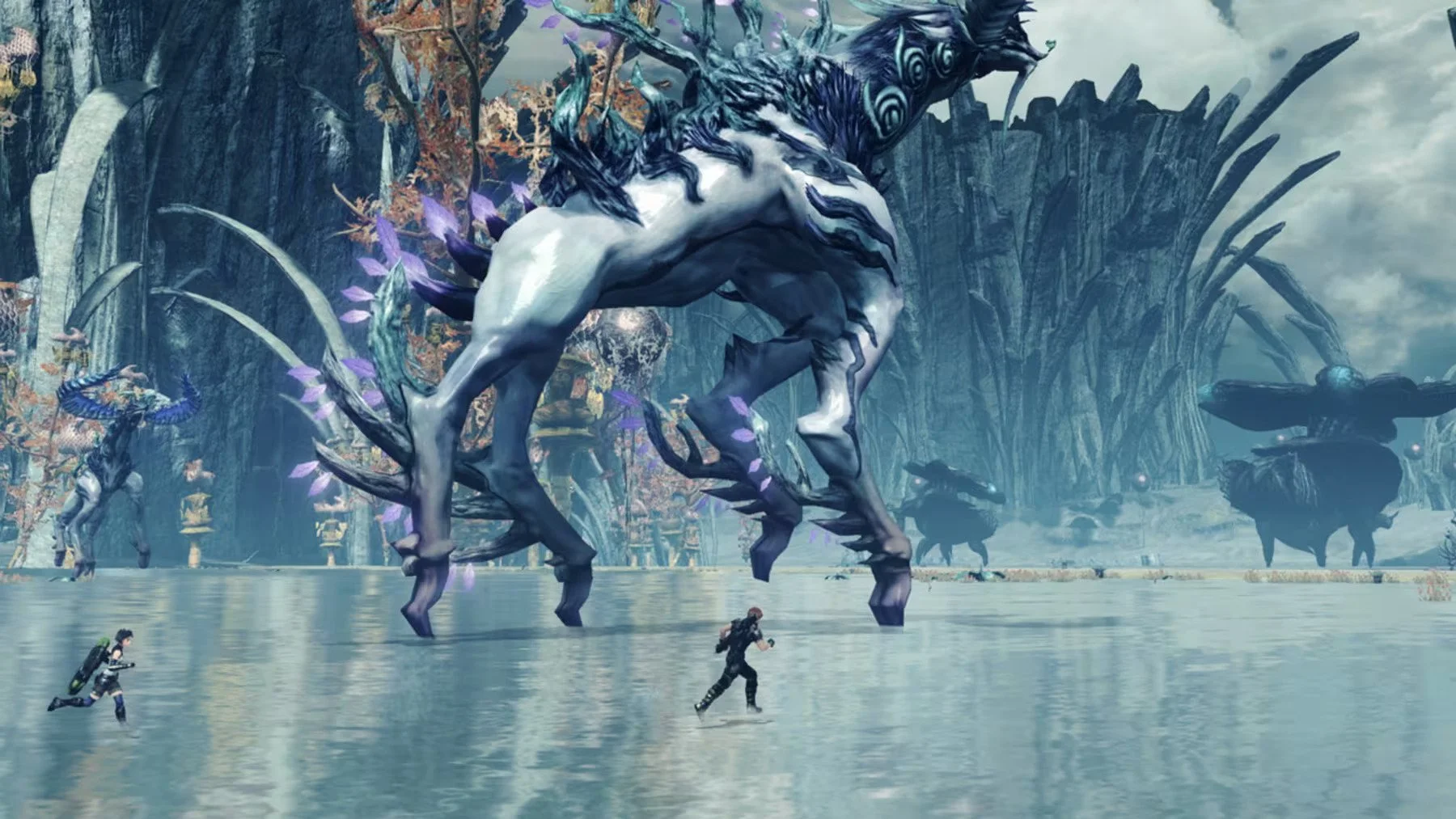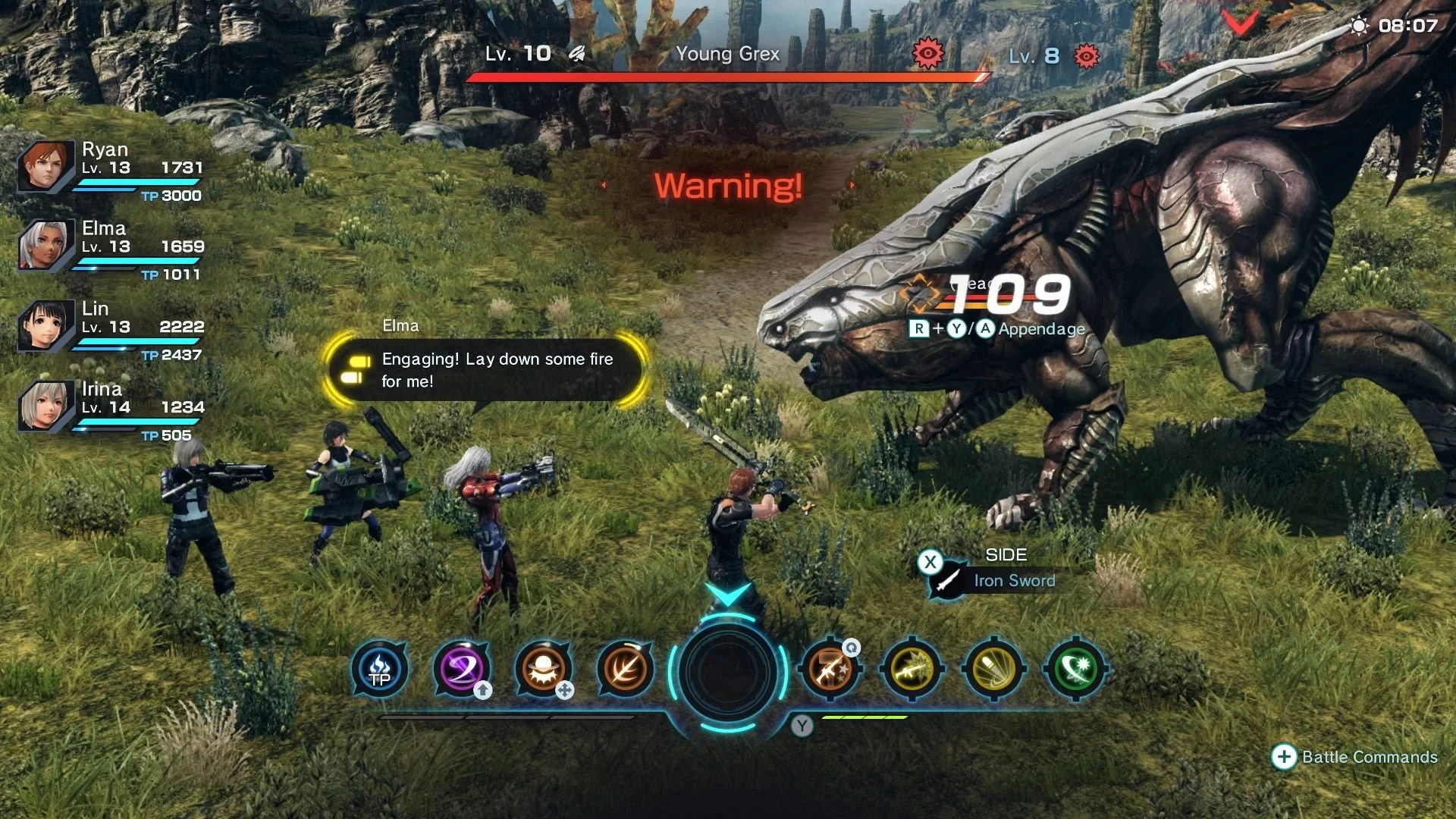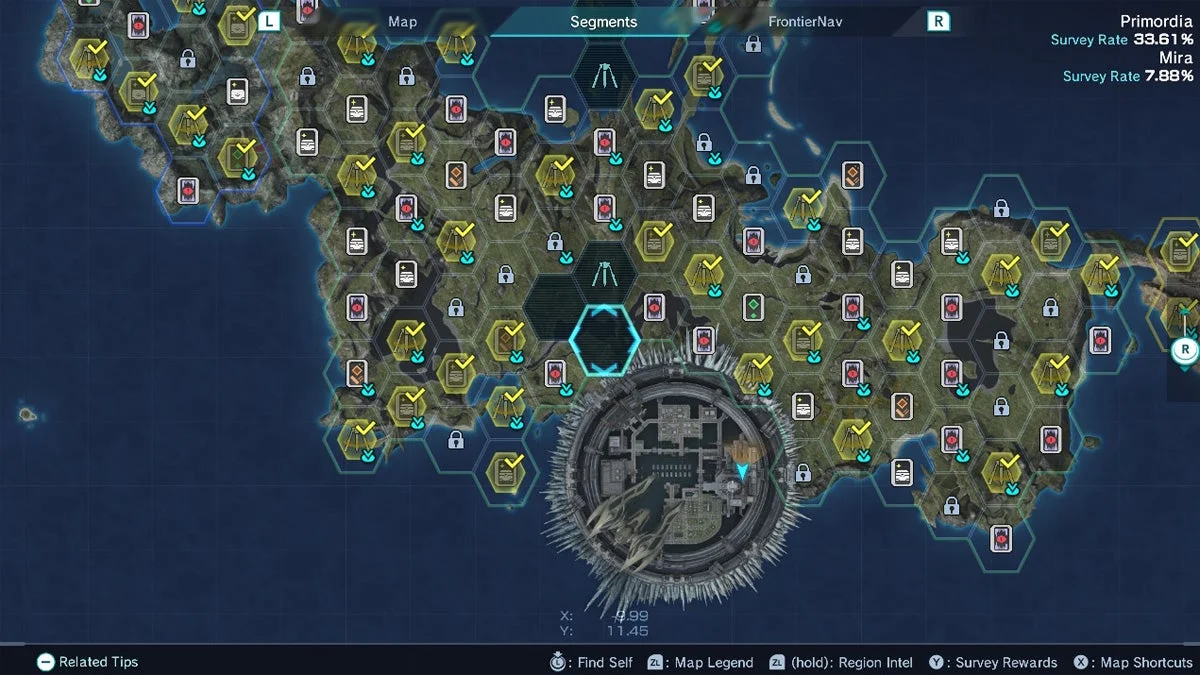The Peak of Open World Games
Image Credit: Nintendo, Monolith Soft
“Xenoblade X truly feels like an anomaly to me. By all accounts this should be a game that I don’t like. A massive open world game with a bare bones story and most of the meaningful content is hidden behind sidequests. But it turns out that if you make the open world fun to explore, remove restrictions on the player, and give them a sick combat system with tons of build variety and a killer soundtrack, it can make for a fun time.”
That quote is from the summary of my Xenoblade Chronicles X: Definitive Edition review. I don’t think that I’ve kept it a secret that I don’t really gel with open world video games. The idea of “go anywhere, do anything” has never been all that appealing to me. I’ve always preferred a more streamlined experience with smaller individual overworlds, rather than one large world. Think games like Okami or Sly Cooper.
Xenoblade X is the exception though. When I first played it back on the Wii U in 2015, I don’t think that I fully understood what kind of game it was trying to be. Then in 2022, I finally gave it another try, and it clicked with me. And with the Switch remake from this year, I can safely say that it’s my favorite open world game ever.
But why exactly is that? Well, that’s what I’m going to try and answer here today. I want to look at the aspects that Xenoblade X accels in where other games of its ilk fall short. And I promise that there are reasons I hold this game in high regard beyond “Big robots are cool.” Though I can promise that there will be a fair bit of that here. It can’t be helped. It comes with the territory.
Exploration
Image Credit: Nintendo, Monolith Soft
You’re given a giant robot that can turn into a car and it can fly. Next segment. Okay, no. Let’s actually look at what’s on offer in Xenoblade X. There are two different styles of movement, traveling by foot, and by your Skell (your giant robot).
Right from the get go, your character has pretty solid movement options. You have a sprint, and a jump that could give Super Mario a run for his money. In the early game, these two options can make for some interesting and creative platforming challenges. If you see any mountains with jagged rocks poking out, you can finesse your way up. Yeah, you could do it easier later with the Skell, but there’s a level of satisfaction of sequence breaking your way up that mountain.
Compare that to games like Horizon Zero Dawn, or Final Fantasy 7: Rebirth who handle their mountain climbing with everyone’s favorite trope: yellow paint! I know that this is a tired complaint, but there’s just nothing fun or engaging about this approach. There’s no creative problem solving. It’s just you running around looking for the one way up the cliffside. Plus, it just looks so ugly and out of place.
I think that this trope is a lot more egregious in Rebirth. In both cutscenes and in combat, you see your characters doing all sorts of crazy acrobatics and impossible feats. So why can’t a man get a jump button? Or they could’ve taken the Elden Ring approach and put in whirlwinds if they wanted to work with vertical exploration. They could’ve had you use your Wind Materia to activate them as shortcuts. But the lack of a jump button, or any meaningful movement made me never want to explore Rebirth’s world. It just wasn’t fun.
Xenoblade X offers a very good sense of progression for exploration. You’re granted access to the Skell after beating Chapter 6 (about halfway through the game). By this point, exploring on foot is starting to feel stale, and storywise, you’re heading to a whole new continent that would take a long time to swim to (though entirely possible).
After you beat Chapter 9, you’re given a quest to add flight to your Skell. This is the final movement upgrade that you’re given, and it’s so damn fun. There’s nothing like taking off as the background music changes to “Don’t Worry” while you fly around, getting to that one FrontierNav Probe that’s been teasing you since the beginning of the game.
Contrast this with something like the Hover Bike from Tears of the Kingdom. The Hover Bike is a four piece vehicle that you can create as soon as you get the Ultrahand power. This vehicle is a one size fits all solution for anything in TotK, and there’s no reason to use any other movement option over it.
Yeah, you could ride a horse, or glue a minecart to your shield and shield-surf. But why would you? The Hover Bike is the fastest movement option that you have, the materials that you need are stupid easy to find, and with auto-build you don’t even need to put any effort into making it. Just save the blueprint and build it wherever you need it.
Xenoblade X gives you flight when you’ve already been to every area. By the time you get it, you’re likely just going to use it to grab the final FrontierNave Probes that you couldn’t get otherwise for map cleanup. Tears of the Kingdom gives you flight within the first few hours, and never gives you a reason to engage with anything else.
Lastly, I want to mention general quality of life things that Xenoblade X does to make exploration fun. There isn’t any fall damage or stamina meters in this game. Your Skell does have a fuel gauge, but that’s never ever an issue. Your Skell will run out of health before it runs out of fuel. Stamina meters are stupid, and I hope that whoever came up with the idea no longer works in the gaming industry.
The fact that there’s no fall damage further helps out with ground exploration. Given that you can walk away from any height means that you’ll want to do some extreme platforming. The only penalty for doing stuff like this is wasted time, and that’s it. You’re not going to accidentally slip, fall, die, and respawn a million miles away from where you were. You just land and then carry on with your day.
Combat
Image Credit: Nintendo, Monolith Soft
So beyond exploring a massive, sprawling open world, what can we do in between sightseeing? Well, that would be the combat. I’m not going to give a full breakdown of Xenoblade X’s combat here. It’s way too in depth for the scope of this article. In the most general sense, you pick a class that has two weapons available to them: melee and ranged. You have a bar with eight weapon Arts on it, and when you use an Art it goes on cooldown for a certain amount of time.
Xenoblade X’s combat is great. It’s fast and engaging. Encounters with normal enemies don’t overstay their welcome, and fights with Unique Monsters require an application and understanding of the combat. Plus, it can be broken over your knee with a little bit of game knowledge, so there’s incentive to build that understanding.
Combat is always going to be subjective. Some styles of gameplay will click with people, and others don’t. For example, I don’t enjoy the combat in Horizon Zero Dawn. I didn’t find the archery fun, and the spear was just bad. The combat in FF7 Rebirth always felt like the regular encounters took way too long; unless you bump the difficulty down to easy mode, then they don’t get to do anything. And Elden Ring is the typical Souls-Borne fair where you either kill the enemy in two hits, or you die in two hits.
Where combat starts to become egregious for me is when there’s no benefit, and you’re only hurting yourself for engaging. Because of the weapon durability system in Tears of the Kingdom, there is zero benefit for fighting enemies, and you’re only making things worse for you because your weapons will either break, or be nearly broken by the end of a fight. Even the Master Sword, the ultimate weapon in Zelda lore, the blade of evil’s bane, runs on a battery and can’t be used indefinitely. It is genuinely better for you to not engage with combat.
Close enough, welcome back Paper Mario: Sticker Star!
And look, I’ll give TotK the benefit of the doubt. The combat is at least fun. Being able to fuse different materials to your weapons is a cool idea. But if you aren’t getting anything from doing it (the combat), then all you’re doing is wasting your time and using up your resources that can be better used against the boss fights. Not to mention that fusing weapons becomes a huge hassle thanks in part to TotK having one of the worst UIs I’ve ever experienced.
I may not be the biggest fan of FF7 Rebirth’s combat. I’ve made my distaste very clear on the podcast. I don’t like the Stagger mechanic, I only think that two of the seven party members are actually fun to play as (Yuffie and Red XIII), and they gave you a dodge roll with no I-Frames. But by doing the combat you’re at least getting party EXP, points for your skill trees, and leveling up your Materia to get stronger magic. There is a tangible benefit to engaging with the combat.
Tears of the Kingdom just doesn’t give you reason or motivation to bother with combat. And again, I need to stress that the Hover Bike is your solution to this. If combat has no benefit, why bother? Just fly over all of those enemies. There’s nothing in the sky that will ground you, forcing you to engage. Who needs to interact with the world in your open world game?
But what bothers me the most about the combat is that your moveset at the start of the game is the moveset that you’ll finish the game with. There aren’t any new combat moves that Link can learn like in Wind Waker or Twilight Princess. You don’t get any new ways to use abilities like Fuse or Ultrahand. You get help from the five Sages, but Tulin is the only one worth a damn because his arrows can stun enemies. The rest of them are basically worthless outside of their dungeon.
The World
Image Credit: Nintendo, Monolith Soft
Finally, let’s look at these open worlds as worlds. The world of Mira is vast, filled with all sorts of strange, yet familiar creatures. Given that this game isn’t part of the mainline Xenoblade games (probably) it doesn’t feature the usual cast of enemies, instead opting for new, freaky alien-like monsters that roam the lands.
If you stop and look around while you’re exploring, you’ll be able to watch the creatures just exist in the environment. Some types of enemies can only be found in certain biomes. The giant dinosaurs live in the fields of Primordia, while the desert of Oblivia has massive worms hiding under the sand.
You’ll also find a lot of creatures that use camouflage to blend in with their surroundings. You may find a patch of flowers, but when you get close, oops one of them is an enemy! You could be walking along, minding your own business, when suddenly you pass by a rock and surprise, it’s a giant crab!
I also want to give a special mention to the Cantor enemies in Sylvalum. These are large, statue-like creatures that typically reside around ravines and cave entrances. They stand completely still, save for their head that is jerking around. As you approach them, you’ll start to hear this loud clicking noise. If you read about them in the game’s enemy log, you’ll learn that this is their way of communicating. This game does such a good job of making you feel like you’re on an alien planet, and makes you learn what you’ll be up against in your fight for survival.
The weather of the regions can vary wildly as well, with each region having its own unique weather to deal with. Meteor showers and auroras can be seen on Primordia. Noctilum can have you dealing with heavy fog and energy mists. The desert of Oblivia will see you contesting with sandstorms and the rare electromagnetic storm. And the fire region of Cauldros will occasionally have fireballs raining down from the sky.
There is so much love and attention to detail put into the world of Mira, and rather than give you the full rundown, I’m going to redirect you to this video by Aeviann. This is a long video, but she goes super in-depth on what Mira is like, and all of the care that Monolith Soft put into every detail of the world. I could just repeat what she said, but she explains these things far better than I could.
I don’t really have a lot to say about the worlds of other open world games. They get the job done, but they never feel like they try to do anything more than that. Tears of the Kingdom feels very “been there, done that”. Not just because it’s a sequel, but also because it just feels like every other 3D Zelda game’s overworld, only now it takes longer to get from point A to point B. Unless, you know… Hover Bike.
I think that Elden Ring’s world is fun to explore once. That first playthrough of not knowing where anything is, getting to the end of a dungeon and not knowing what your reward is is very cool. But on repeat playthroughs, you’re just gonna beeline it to whatever gear that you need for your build, disincentivizing you to bother exploring the world in favor of going right for that oh so glorious Moonveil Katana.
And I don’t even want to bother giving a mention to FF7: Rebirth’s open world. It’s about as basic, cookie-cutter, tick the checkboxes as you can get. By the end of the first area, I was already tired of looking for the towers to get dumbass Chadley his dumbass intel. Every region in this game is so massive, and it isn’t fun moving around from place to place. Eventually I stopped engaging with the open world all together. I just didn’t have any interest in bothering with his requests. And by the end of the game I got sick of Chadley and his dumbass face.
I think that Ghost of Tsushima’s idea of having the wind guide you from place to place is cool. Not having the screen cluttered with markers and icons is nice. But eventually I just get tired of doing the side stuff here too. When the side stuff turns from “fun exploration” to “fill out this checklist” it turns into busy work. No, Ghost of Tsushima, I will not go out and find all 49 of your Inari Shrines.
Closing
Consider this article as a “Part 2” to my Xenoblade X review. Originally this article wasn’t even my plan for this month. But after finishing the game again, I realized that I still had a lot to say that didn’t really have a place in the review format. This also seemed like the best time to put out some extra thoughts on the game. Get this done while Xenoblade X is still relevant.
This is also something that I’ve wanted to get off my chest for a while. For the longest time I thought that open world games were just a genre that I didn’t like. But it turns out that I just didn’t like the ones that I played. Xenoblade X was a game that was far ahead of its time, pulling off some of the best open world design back in 2015 on the Wii U. But honestly, Xenoblade X said it the best. “There’s something about this planet.” Something that keeps me coming back for more. Something about it that grabbed me like no other open world game has.
I think that the gaming industry could learn a lot from Xenoblade X’s design. I’m not saying that every game should be as in depth with its world design as this, but there should be a reason for the open world to exist beyond “this is the direction the industry is headed”. In a world of FF7: Rebirths, don’t be afraid to be a Final Fantasy 16. At least in terms of level design. FF16 is a topic for another day.
Thanks for reading another article of my ramblings. Come back next month when we talk about an underrated aspect of games that isn’t often brought up.




